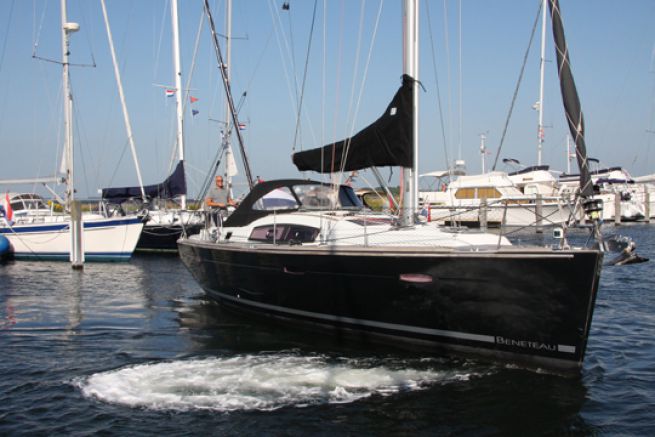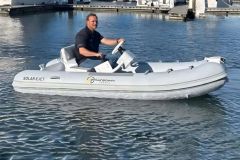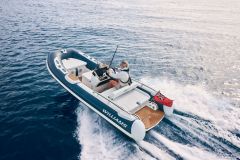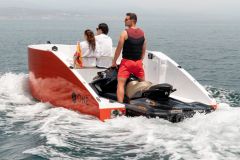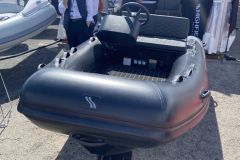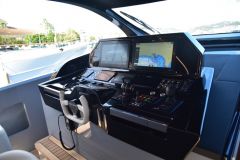Installing a bow thruster on a boat is often a headache. To be effective, it must be as far forward as possible to provide the best thrust (leverage) and also as deep as possible so that its propeller does not breathe and it does not cavitate. However, the bow of a boat, a sailboat or a motorboat is not often deeply immersed in the water.
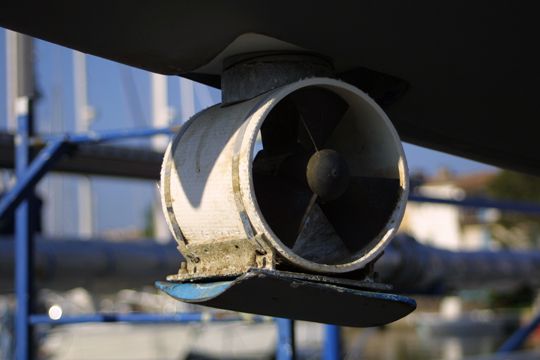
This is why retractable thrusters are used. Indeed, on boats that cannot accommodate a tunnel, a thruster is placed that unfolds under the boat and dives under the boat. But this requires major structural work on the boat to open a hatch at this point. Otherwise, tunnel thruster systems are also used. But they leave large openings in the hull which does not favor the flows. In addition, these two systems both have a propeller that can get blocked by swallowing dirt or algae. Their maintenance requires a water outlet.
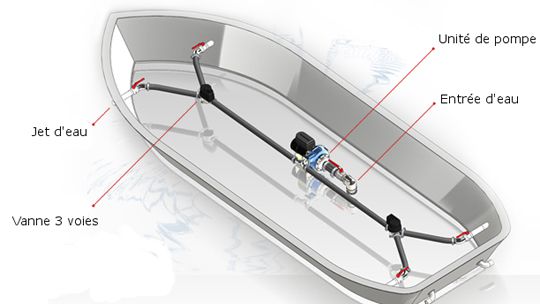

The use is done from the cockpit with 2 joysticks: one for the front and another for the back. With the 2 thrusters, stern and bow, you can move the boat laterally. We present here the complete version of the installation, but it is possible to install only the bow thrusters. In this case, the pump is the same, but only 2 hoses are needed to the front.
This product is now well established and already installed on many boats, including sailboat rental fleets. Dufour has added it to its catalog of options, and it could be seen installed on the 460, the latest addition to the range, at the latest Autumn boat shows (Grand-Pavois and Cannes).
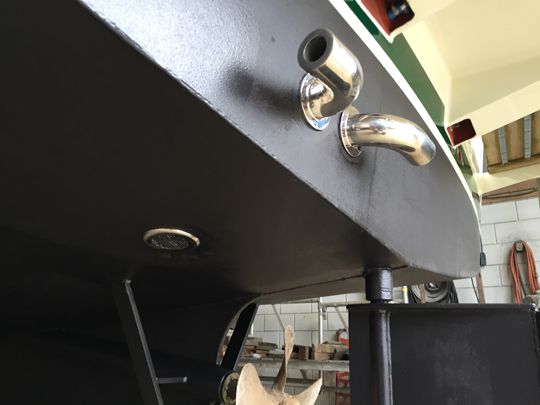
Benefits:
- The pump, the main weight of the installation, is installed under the waterline where you want it. This allows to center the weights. Ideal on a sailboat.
- The thrusters are traditional through-hulls (diameter 70 mm) which can be easily installed on the hull, even very close to the bow, given their small size. The "leverage" to turn the boat is thus maximum.
- For powerboat transoms, 90░ elbows can be installed to direct the water flow to the side.
- No cavitation problem for these water jets. They can even be installed above the waterline (but in this case, they lose 10% of their efficiency).
- The openings of the through-hulls do not drag water like a conventional thruster tunnel.
- For maintenance, there is no need to take the boat out of the water. The pump is accessible from the inside. Just close the valves before dismantling. Saves time and money (no craning).
- The system is much quieter inside the boat, but also outside. You just hear the sound of a pump.
Disadvantages:
- The high-pressure pump requires a lot of energy (more than a thruster). For sailboats, it is therefore imperative to operate it at the same time as the engine, otherwise the batteries will be quickly drained.
- The maximum thrust is 90 kg, which limits the device to units of 45 to 50 feet maximum. The thrusters can go on much larger units.
- ├euros the purchase, the price is a little more expensive than a conventional thruster (same price as a tilting thruster), but for a full comparison, you have to take into account the lack of maintenanceÔeurosŽ
Distributed in France by Tecmar.

 /
/ 